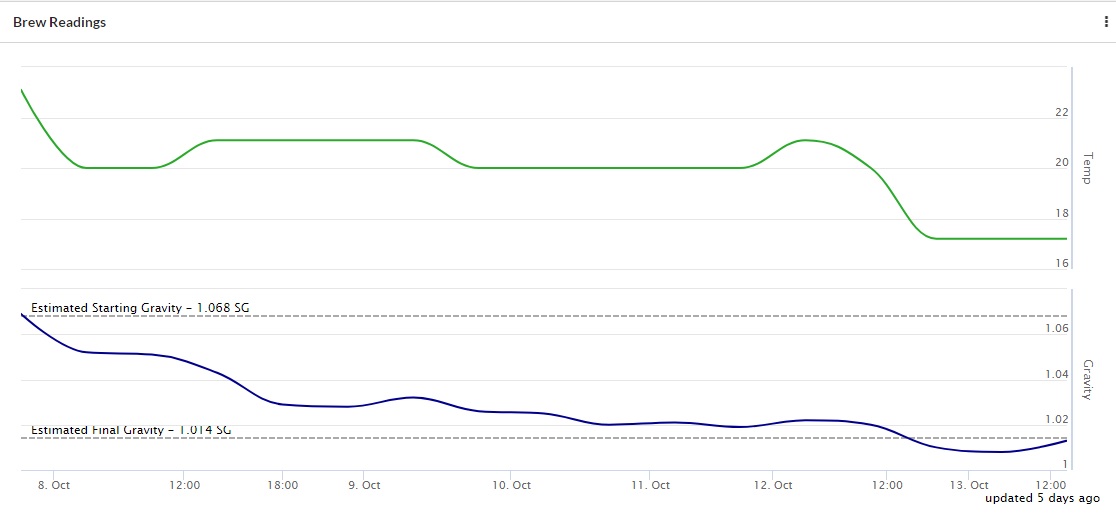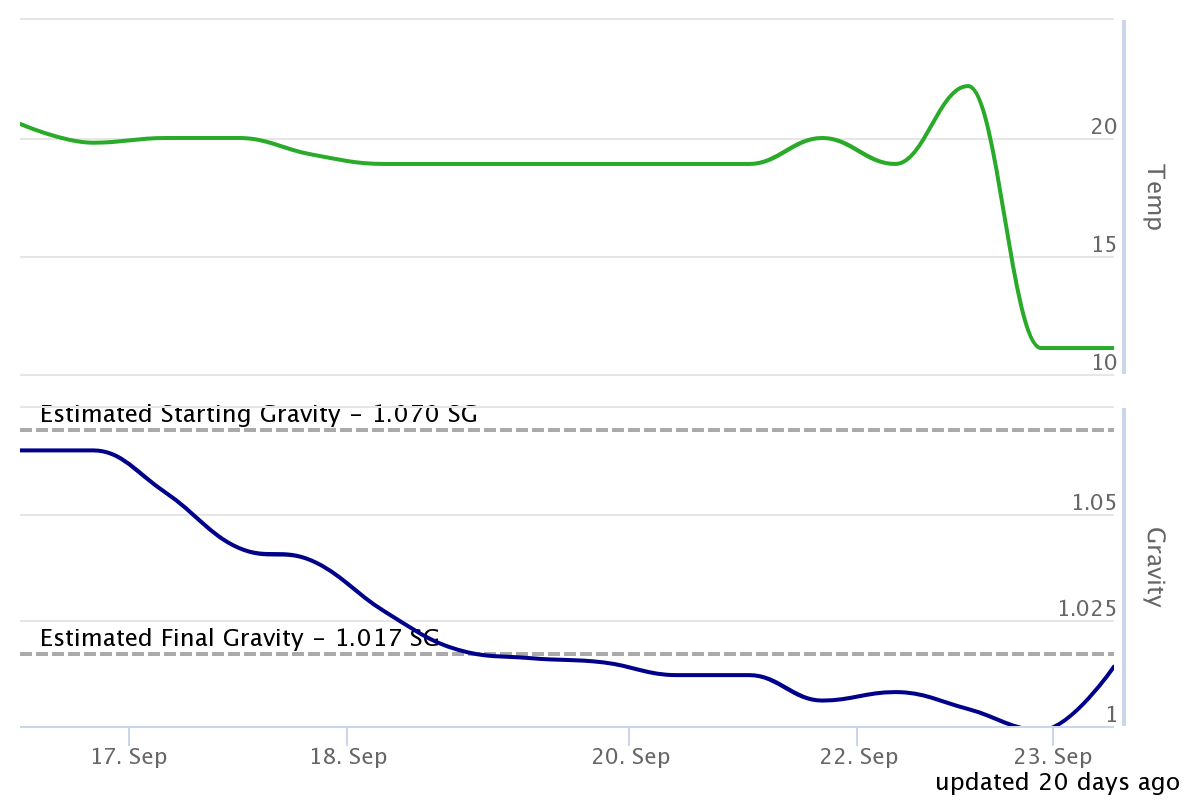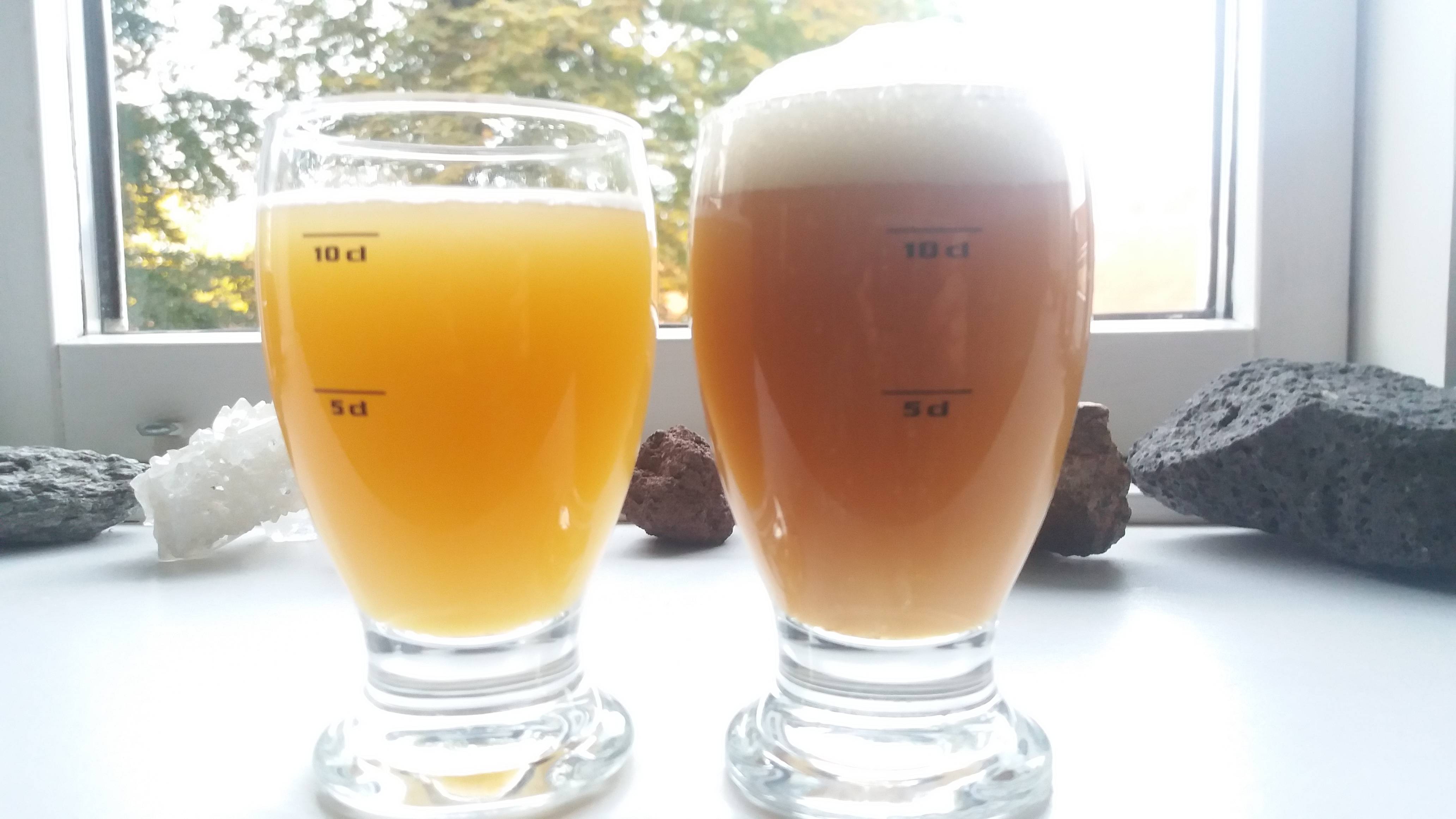Chris-18
Well-Known Member
- Joined
- Jul 15, 2015
- Messages
- 47
- Reaction score
- 14
Hey all
I thought I would post my experience with switching from plastic buckets to conical stainless steel fermenters.
3 weeks ago I bought an SS Brewtech Chronical 7 gallon cylindroconical stainless steel tank, upgrading directly from 7 gallon plastic dish bottom fermenters.
Disclaimers/info
I am not endorced by any company, this is just my personal experience.
So far I have only brewed 1 beer in the SS Brewtech fermenter, so take this all with a grain of salt.
I have been brewing my NEIPA 6.0 recipe. I have only changed the hops from the batch to batch. Amounts of hops and other equipment is exactly the same. All fermentation data is collected by a Tilt hydrometer. The same hydrometer has been used in all batches.
All batches are temperature controlled, and the same fridge has been used.
Also, the amount of dryhops interfered with the gravity and temperature readings, as the stuck to the Tilt hydrometer, so that is why there are some wild fluctuations in the readings
With all that out of the way, here is my verdict.
The beer I have been brewing is my NEIPA 6,0 beer.
It is a double IPA with an almost stupid amount of hops.
The malt bill is as follows:
Maris Otter
Pale ale malt
Wheat malt
Flaked oats
Hops:
Citra
Colombus
Mosaic
Yeast: WLP095 Burlington Ale
I won't give much else away, since I have been working on this recipe for a long time, but you get the idea.
Beer fermented in stainless steel fermenter

Beer fermented in plastic bucket:

I ended up with a final attenuation on the conical of 81% which is almost 3% higher than the plastic bucket.
Now, the fermentation side is one thing, however, the real test for me is the dryhopping and transfer to bottle and kegs.
The conical allows you to do closed transfers directly to kegs or bottles. I chose to keg this beer. I also purged the keg with CO2, I did not do this with the previous beer.
NEIPA's are hysterically sensitive to oxygen! Just transfer to bottles or kegs will introduce enough oxygen to oxidize the hop polyphenols and oils, resulting in a brown color and a slightly buttery/dusty aroma.
Guess which one is oxidized. Again, this is exactly the same beer.

The conical fermenter also allowed me to introduce dryhops while also purging with CO2. I could do this with a plastic bucket, but it was much harder.
The conical also allowed me to dump yeast before dryhopping, so that yeast doesn't interfere with the dryhopping.
Cleaning:
Cleaning is somewhat easier with the plastic bucket, as there is only the bucket and lid that needs cleaning.
The stainless fermenter has a lot more parts, such as ball valves which is a bit more of pain. However, the plastic bucket has a tendency to absorb some aroma from the beer. Even after cleaning, you can still smell some hop aroma in the bucket.
The stainless fermenter doesn't do this at all. You don't need nearly as much elbow grease to clean it. Proteins etc. come off a lot easier, and there is no residual aroma or smell.
Price:
Price is the only part where the SS fermenter fails. It costs roughly 15 times as much as a basic plastic bucket, so there is that. While it's a lot of money, it's totally worth it!
Anyway, this is my very basic review, I hope this helps some of you if you can't decide what to buy.
If you have any questions, just let me know

I thought I would post my experience with switching from plastic buckets to conical stainless steel fermenters.
3 weeks ago I bought an SS Brewtech Chronical 7 gallon cylindroconical stainless steel tank, upgrading directly from 7 gallon plastic dish bottom fermenters.
Disclaimers/info
I am not endorced by any company, this is just my personal experience.
So far I have only brewed 1 beer in the SS Brewtech fermenter, so take this all with a grain of salt.
I have been brewing my NEIPA 6.0 recipe. I have only changed the hops from the batch to batch. Amounts of hops and other equipment is exactly the same. All fermentation data is collected by a Tilt hydrometer. The same hydrometer has been used in all batches.
All batches are temperature controlled, and the same fridge has been used.
Also, the amount of dryhops interfered with the gravity and temperature readings, as the stuck to the Tilt hydrometer, so that is why there are some wild fluctuations in the readings
With all that out of the way, here is my verdict.
The beer I have been brewing is my NEIPA 6,0 beer.
It is a double IPA with an almost stupid amount of hops.
The malt bill is as follows:
Maris Otter
Pale ale malt
Wheat malt
Flaked oats
Hops:
Citra
Colombus
Mosaic
Yeast: WLP095 Burlington Ale
I won't give much else away, since I have been working on this recipe for a long time, but you get the idea.
Beer fermented in stainless steel fermenter

Beer fermented in plastic bucket:

I ended up with a final attenuation on the conical of 81% which is almost 3% higher than the plastic bucket.
Now, the fermentation side is one thing, however, the real test for me is the dryhopping and transfer to bottle and kegs.
The conical allows you to do closed transfers directly to kegs or bottles. I chose to keg this beer. I also purged the keg with CO2, I did not do this with the previous beer.
NEIPA's are hysterically sensitive to oxygen! Just transfer to bottles or kegs will introduce enough oxygen to oxidize the hop polyphenols and oils, resulting in a brown color and a slightly buttery/dusty aroma.
Guess which one is oxidized. Again, this is exactly the same beer.

The conical fermenter also allowed me to introduce dryhops while also purging with CO2. I could do this with a plastic bucket, but it was much harder.
The conical also allowed me to dump yeast before dryhopping, so that yeast doesn't interfere with the dryhopping.
Cleaning:
Cleaning is somewhat easier with the plastic bucket, as there is only the bucket and lid that needs cleaning.
The stainless fermenter has a lot more parts, such as ball valves which is a bit more of pain. However, the plastic bucket has a tendency to absorb some aroma from the beer. Even after cleaning, you can still smell some hop aroma in the bucket.
The stainless fermenter doesn't do this at all. You don't need nearly as much elbow grease to clean it. Proteins etc. come off a lot easier, and there is no residual aroma or smell.
Price:
Price is the only part where the SS fermenter fails. It costs roughly 15 times as much as a basic plastic bucket, so there is that. While it's a lot of money, it's totally worth it!
Anyway, this is my very basic review, I hope this helps some of you if you can't decide what to buy.
If you have any questions, just let me know


